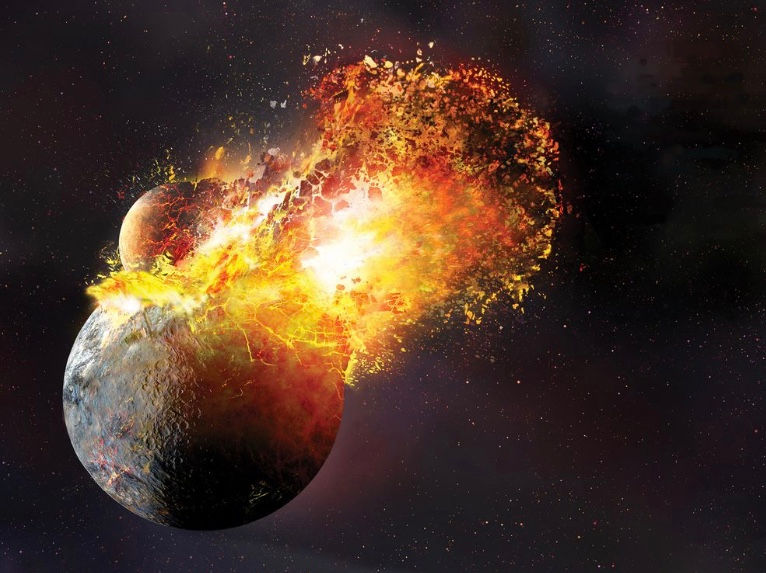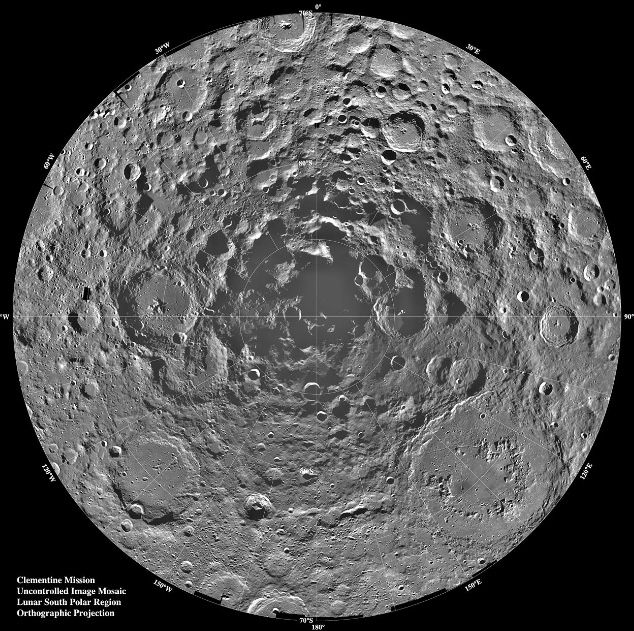What is the Moon Made of?
- STEAMworks OC
- Aug 30, 2020
- 4 min read

Our solar system has over 200 moons. Most of these moons are found orbiting the gas giants, planets made up of mostly gases like hydrogen and helium. The gas giants in our solar system are Neptune, Saturn, Uranus, and Jupiter. However, even a dwarf planet like Pluto can have several moons - five! Earth’s moon is its largest satellite and only companion but why does it look the way it does? It has to do with what the moon is made out of! There have been many assumptions of what the moon is made out of - even cheese! I’m sad to say that the moon is not made of swiss cheese. So let’s get right into what makes the moon, the moon!
How did the Moon form?
Before we find out what the moon is made up of we should first know how it got there in the first place. What formed Earth’s moon in the first place? Well, there’s one theory that has been backed by the likes of NASA and scientists worldwide.
Around 4.5 billion years ago a planet or body of rock around the size of Mars collided with Earth. This theory is known as the collision theory. This collision resulted in a larger Earth as the two masses combined but some of the debris from the collision was jetted into Earth’s orbit. This debris that entered Earth’s orbit accumulated and became the moon.

Evidence in support of this theory came with the return of the Apollo 11 mission on July 24th, 1969. The United States Apollo 11 mission was the first mission to land humans on the Moon. The crew goes as follows: Neil Armstrong (commander), Buzz Aldrin (lunar module pilot), and Michael Collins (command module pilot). What these three men brought back from the moon was extremely valuable in studying the formation of the moon. Armstrong and his team brought back lunar material in the form of rock samples from their journey. The lunar material they brought back had chemical makeups almost identical to the soil and rock on Earth, suggesting that the Moon and Earth share common history.
What Makes up the Moon?
Now that we know where the moon came from let’s dive into what it’s really made of. The elements found in and on the Moon are not only there thanks to the collision theory. It’s estimated that around 3.8 billion years ago the Earth and Moon were pelted by thousands upon thousands of asteroids. These asteroids crashed into the Moon and Earth, depositing their minerals and also leaving the thousands of craters on the Moon. What makes the Moon different from the Earth is its lack of an atmosphere, erosion, and tectonic plates. All three of these things have wiped away any evidence of meteor collisions on Earth. The Moon, however, has no wind to blow away impact craters. It also has no atmosphere that could break up incoming asteroids, or tectonic plates that would push the Moon’s crust beneath the surface, covering these craters. Because of these three factors we are left with the Moon we see and love today.
But after the meteor showers and formation of the Moon itself, what actually makes up the Moon? It’s a tricky question since we don’t have easy access to the moon beneath its crust but scientists can make pretty accurate guesses based off of collision theory and the samples taken from several Moon missions.

Like the Earth, the Moon is made up of several layers. The outermost layer is the crust, then there’s a mantle, and finally the core. The outermost layer of the Moon is made up of two sections. The first layer of the Moon is the crust and it is made up of oxygen, silicon, magnesium, iron, calcium, and aluminum. Next is the mantle which is composed of olivine, orthopyroxene and clinopyroxene - minerals extremely common in the mantle of the Earth. The mantle of the Moon is also theorized to be extremely iron-rich, maybe even more than Earth’s. Finally, there is the core of the moon which is made up of the inner and outer core. The inner core of the Moon is made up of the densest minerals as denser minerals sink to the core while lighter minerals rise to the surface. For this reason the core of the Moon is mostly iron with hints of sulfur and nickel. And then there’s the outer core which is hypothesized to be liquid or softer than the inner core. The outer core is also almost completely iron. As you can see the Earth and Moon share many minerals! This is a direct result of billions of years of history.
Now that you know what the moon is made up of you can finally tell everyone it’s definitely not made of cheese. Even though that would be pretty amazing. And delicious. No matter what the moon is made out of, cheese or not, its cratery surface is always a wonderful sight to behold.
Works Cited
Apollo 11 (AS-506) | National Air and Space Museum. airandspace.si.edu/explore-and-learn/topics/apollo/apollo-program/landing-missions/apollo11.cfm. Accessed 30 Aug. 2020.
Crane, Leah. “There Is Water Just under the Surface of the Moon That We Could Use.” New Scientist, www.newscientist.com/article/2199618-there-is-water-just-under-the-surface-of-the-moon-that-we-could-use/. Accessed 30 Aug. 2020.
How Did the Moon Form? www.nhm.ac.uk/discover/how-did-the-moon-form.html. Accessed 30 Aug. 2020.
Howell, Elizabeth. “Apollo 11 Flight Log, July 24, 1969: Return to Earth.” Space.com, Space, 24 July 2019, www.space.com/26631-apollo-11-flight-log-july-24-1969.html. Accessed 30 Aug. 2020.
---. “Gas Giants: Facts About the Outer Planets.” Space.com, Space, 30 Mar. 2018, www.space.com/30372-gas-giants.html. Accessed 30 Aug. 2020.
“Moons.” NASA Solar System Exploration, solarsystem.nasa.gov/moons/overview. Accessed 30 Aug. 2020.
“Was Our Moon’s Formation Likely or Lucky?” Astrobites, astrobites.org/2015/04/08/was-our-moons-formation-likely-or-lucky/. Accessed 30 Aug. 2020.
“What Is the Moon Made Of? - Universe Today.” Universe Today, www.universetoday.com/20583/what-is-the-moon-made-of/. Accessed 30 Aug. 2020.
Why Does the Moon Have Craters? | NASA Space Place – NASA Science for Kids. spaceplace.nasa.gov/craters/en/. Accessed 30 Aug. 2020.




Comments